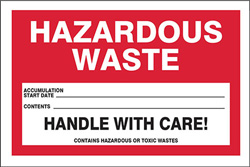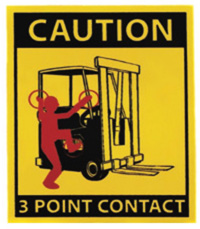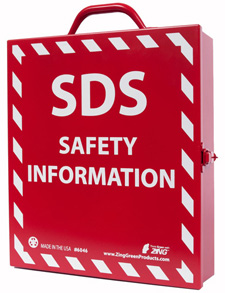



Find all of your laboratory and workplace safety supplies at Safety Emporium!
 Hazardous |
 Glossary Index |
 HCC |
| MSDS Topics |
Free Sites | FAQ's | Regulations | Glossary | Software | Suppliers |
| Books | Forum | Poll | Fun stuff | Quiz | Store | |
| Understand your MSDS with the MS-Demystifier | Search ALL our MSDS info | |||||

Get your hazardous waste labels from Safety Emporium.
The U.S. OSHA Hazardous Waste Operations and Emergency Response, HAZWOPER standards, 29 CFR 1910.120 (for general industry) and 29 CFR 1926.65 (for construction), regulate the safety and health of the employees involved in clean-up operations at uncontrolled hazardous waste sites, employees engaged in certain hazardous waste sites, employees engaged in certain hazardous waste treatment, storage, and disposal (TSD) operations, and in any emergency response activities involving hazardous substances. In short, HAZWOPER applies to hazardous waste facilities.
The two standards, 29 CFR 1910.120 and 29 CFR 1926.55, are identical. In addition, the US EPA has its own identical standard, 40 CFR 311, which incorporates 29 CFR 1910.120 by reference. Therefore, most professionals simply refer to HAZWOPER as 29 CFR 1910.120 when citing the regulation.
Federal OSHA does not cover state and local government employees. However, when OSHA was created in 1970, Congress agreed to let states form or continue their own state OSHA agencies so long as the laws of that state, at a minimum, meet the federal OSHA standards. This gave states the flexibility to add additional coverage/regulation. As a result, in most state plan jurisdictions, state and local public sector employees are covered by their state's OSHA regulations.
To close the loophole that HAZWOPER would not automatically protect government employees in non-state plan states, EPA established 40 CFR 311 which incorporates 29 CFR 1910.120 by reference. As EPA authority does cover state and local government workers, HAZWOPER protects all local and state government employees or volunteers who perform operations within its scope (e.g., hazardous waste operations and emergency response activities).

Maintain safe operation of forklifts with forklift labels, signs, tags, banners, lockout kits and more from Safety Emporium.
The HAZWOPER regulation became effective on March 6, 1990 and applies to five distinct group of employers and employees:
Examples of emergency situations covered include:
HAZWOPER has a number of important training requirements. Employees must take a training course between 4 to 40 hours depending on their role and the hazards they might encounter. Annual refresher training is also required. Wikipedia has a concise summary of HAZWOPER training levels.

Your employees can stay informed and comply with OSHA regulations with SDS information stations and compliance products from Safety Emporium.
NOTE: We may collect a share of sales or other compensation from the links in the following list:
The 2012 revision of 29 CFR 1910.1200, the OSHA Hazard Communication Standard, follows the Globally Harmonized System which has a consistent 16-part format for Safety Data Sheets. However, sections 12 through 15 are non-mandatory because OSHA does not have jurisdiction over those areas.
"Disposal considerations", Section 13 of the SDS, is one of those non-mandatory sections. Therefore, sheets from only the most responsible or thorough manufacturers will have any information there, and that may or may not reference disposal regulations.
Regardless, SDS's are an important component of the HAZWOPER regulation. For example, under SARA Title III, SDS's or an alternative must be submitted to the state emergency response commission (SERC), local emergency planning committee (LEPC) and the local fire department under these conditions:
Likewise, an employer at a hazardous waste facility may use SDS's (or other information) to determine the level of protection that is appropriate for hazardous substances as well as health hazards when there is no permissible exposure limit or published exposure limit.
A key point is that SDS's are not required for hazardous wastes according to 29 CFR 1910.1200(b)(6)(i).

Communicate workplace hazards with handy labels from Safety Emporium.
See also: CERCLA, EPCRA, RCRA, TRI.
Additional definitions from Google and OneLook.
Entry last updated: Saturday, December 31, 2022. This page is copyright 2000-2025 by ILPI. Unauthorized duplication or posting on other web sites is expressly prohibited. Send suggestions, comments, and new entry desires (include the URL if applicable) to us by email.
Disclaimer: The information contained herein is believed to be true and accurate, however ILPI makes no guarantees concerning the veracity of any statement. Use of any information on this page is at the reader's own risk. ILPI strongly encourages the reader to consult the appropriate local, state and federal agencies concerning the matters discussed herein.